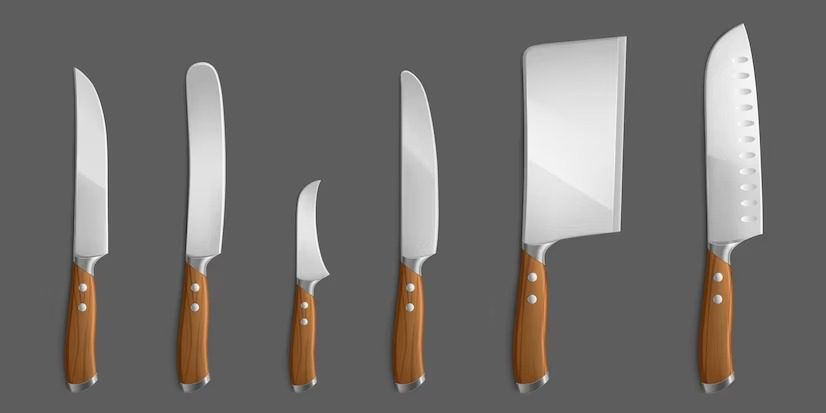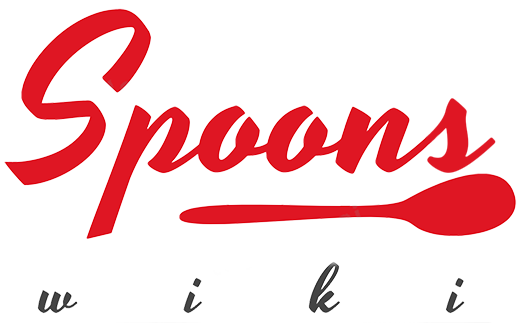Different Types of Knives-The Right Tool for the Job

Knives are a ubiquitous tool that has been used by humans for centuries for a wide range of purposes. From hunting and survival to food preparation and everyday tasks, knives have become an essential part of our daily lives. With so many different types of knives available, each designed for specific tasks, it’s important to understand the various features and characteristics of each type to determine which one is best suited for a particular job.
In this article, we will provide an in-depth overview of the different types of knives available, their intended uses, and the materials and construction techniques used to make them. We will also discuss important factors to consider when choosing a knife, such as blade shape and size, handle material and design, and safety features.
Read More: Guide to Chef Knives: Understanding Chef Knife Purposes
Basic Types of Knives
1. Chef’s Knife
A chef’s knife, also known as a cook’s knife, is a versatile kitchen tool with a broad, tapering blade, usually 6 to 12 inches in length. It is designed for a variety of tasks, such as slicing, dicing, and chopping fruits, vegetables, and meats.
2. Paring Knife
A paring knife is a small, sharp knife with a narrow, pointed blade typically 3 to 4 inches long. It is ideal for precision tasks like peeling, trimming, and deveining, as well as slicing small fruits and vegetables.
3. Bread Knife
A bread knife features a long, serrated blade designed to cut through the crusty exterior of a loaf of bread without crushing the soft interior. It can also be used for slicing other soft, textured foods, like tomatoes and cakes.
Knives for Outdoor Activities
3. Pocket Knife
A pocket knife is a compact, folding knife that can be carried in a pocket or on a belt. It often features multiple blades and tools, such as scissors, screwdrivers, and bottle openers, making it a useful tool for everyday tasks and outdoor adventures.
Specialty Knives
2. Fillet Knife
A fillet knife is similar to a boning knife but with a more flexible and thinner blade. It is specifically designed to fillet fish, allowing for precise cuts and easy removal of skin and bones.
4. Santoku Knife
A Santoku knife is a Japanese-style knife with a shorter, wider blade than a chef’s knife. Its name translates to “three virtues,” referring to its versatility in slicing, dicing, and chopping. The blade often has indentations, called a Granton edge, which help release food from the blade during slicing.
Knives for Specific Tasks
1. Carving Knife
A carving knife has a long, narrow blade with a sharp point, designed for slicing large cuts of meat, like roasts, hams, and turkeys. It allows for thin, even slices and is often used in conjunction with a carving fork to hold the meat in place during slicing.
Knife Materials and Construction
1. Blade Materials
Blades can be made from various materials, with stainless steel and carbon steel being the most common. Stainless steel is resistant to rust and staining, while carbon steel is known for its sharpness and edge retention.
2. Handle Materials
Handles can be made from wood, plastic, or metal. Each material has its advantages and disadvantages, such as durability, comfort, and ease of cleaning. Wood handles offer a classic appearance and good grip, while plastic and metal handles are often more resistant to moisture and bacteria.
3. Blade Shapes and Grinds
Blade shapes and grinds can affect the cutting performance and ease of maintenance. Common blade shapes include straight edge, serrated edge, and Granton edge. Straight edges are versatile and easy to sharpen, while serrated edges are ideal for cutting through tough or soft materials. Granton edges feature indentations that reduce friction and sticking.
Read More: Can you put sharp knives in the dishwasher?
Knife Maintenance and Safety
Sharpening and Honing
To maintain a knife’s sharpness, regular honing with a honing rod is recommended to realign the blade’s edge. Sharpening using a whetstone or knife sharpener should be done periodically when the blade becomes dull.
Cleaning and Storage
Proper cleaning and storage are essential for maintaining the quality and longevity of your knives. Hand-washing with warm, soapy water and drying immediately is recommended to prevent rust and staining. Store knives in a knife block, on a magnetic strip, or in a protective sheath to protect the blade and prevent accidents.
Safe Handling Practices
Always practice safe knife handling to prevent injuries. Cut away from your body, keep your fingers clear of the blade, and use a cutting board with a non-slip surface. When handing a knife to someone else, offer the handle first with the blade facing away.
Read More: Top 5 best Kitchen Knife Sharperners
FAQs
Q: What are the 10 different types of knives and their uses?
A: The 10 different types of knives and their uses are:
1. Chef’s Knife: Versatile knife used for chopping, slicing, and dicing.
2. Paring Knife: Small knife used for intricate tasks like peeling and trimming.
3. Santoku Knife: Japanese knife used for slicing, dicing, and mincing.
4. Bread Knife: Serrated knife used for slicing bread and other baked goods.
5. Utility Knife: All-purpose knife used for various tasks in the kitchen.
6. Boning Knife: Knife used for removing bones from meat and poultry.
7. Fillet Knife: Flexible knife used for filleting fish.
8. Cleaver: Heavy knife used for chopping through bones and tough ingredients.
9. Carving Knife: Knife used for slicing cooked meats, such as roasts.
10. Steak Knife: Knife with a sharp, serrated edge used for cutting cooked meats at the table.
Q: What are the four basic types of knives?
A: The four basic types of knives are:
1. Chef’s Knife
2. Paring Knife
3. Bread Knife
4. Utility Knife
Q: What are 2 types of knives?
A: Two types of knives are:
1. Chef’s Knife
2. Paring Knife
Q: What are 4 common kitchen knives?
A: Four common kitchen knives are:
1. Chef’s Knife
2. Paring Knife
3. Bread Knife
4. Utility Knife
Q: What are the 3 main knives?
A: The three main knives are:
1. Chef’s Knife
2. Paring Knife
3. Bread Knife
Q: What are the 10 basic knife cuts?
A: The 10 basic knife cuts are:
1. Dice
2. Julienne
3. Brunoise
4. Batonnet
5. Chiffonade
6. Mince
7. Slice
8. Chop
9. Brunoise
10. Paysanne
Q: What are 8 different knife cuts?
A: Eight different knife cuts are:
1. Dice
2. Julienne
3. Brunoise
4. Batonnet
5. Chiffonade
6. Mince
7. Slice
8. Chop
Q: What are common knives?
A: Common knives refer to the types of knives that are widely used in kitchens for various purposes. Some examples of common knives include chef’s knives, paring knives, bread knives, and utility knives.
Q: What is a chef’s knife called?
A: A chef’s knife is also commonly referred to as a cook’s knife or a French knife.
Conclusion
Understanding the different types of knives, their uses, materials, and construction can greatly enhance your efficiency and safety in the kitchen and beyond. Investing in a quality set of knives and taking proper care of them will ensure that they remain sharp and functional for years to come. Choose the right knife for the task at hand, and enjoy the satisfaction that comes from working with well-crafted tools.















